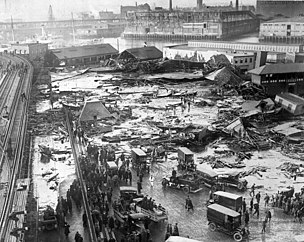Mayflower dropped anchor in Cape Cod, Massachusetts, and the Mayflower Compact was signed in 1620. This brief but extremely important document, reproduced below, was one of the first steps toward democracy.
In the name of God, Amen. We, whose names are underwritten, the loyal subjects of our dread Sovereign Lord King James, by the Grace of God, of Great Britain, France, and Ireland, King, defender of the Faith, etc.
Having undertaken, for the Glory of God, and advancements of the Christian faith and honor of our King and Country, a voyage to plant the first colony in the Northern parts of Virginia, do by these presents, solemnly and mutually, in the presence of God, and one another, covenant and combine ourselves together into a civil body politic; for our better ordering, and preservation and furtherance of the ends aforesaid; and by virtue hereof to enact, constitute, and frame, such just and equal laws, ordinances, acts, constitutions, and offices, from time to time, as shall be thought most meet and convenient for the general good of the colony; unto which we promise all due submission and obedience.
In witness whereof we have hereunto subscribed our names at Cape Cod the 11th of November, in the year of the reign of our Sovereign Lord King James, of England, France, and Ireland, the eighteenth, and of Scotland the fifty-fourth, 1620.



 Polar bear was put on display in Boston, Massachusetts, in 1733. Idea: Children could discuss why this would be a very big event for that time period. Carnivores, polar bears are becoming rare. Today scientists estimate 20,000 to 25,000 polar bears exist. Experts believe that by 2050 that number will be cut in half. Children can learn more about polar bears and see some great photos at:
Polar bear was put on display in Boston, Massachusetts, in 1733. Idea: Children could discuss why this would be a very big event for that time period. Carnivores, polar bears are becoming rare. Today scientists estimate 20,000 to 25,000 polar bears exist. Experts believe that by 2050 that number will be cut in half. Children can learn more about polar bears and see some great photos at: